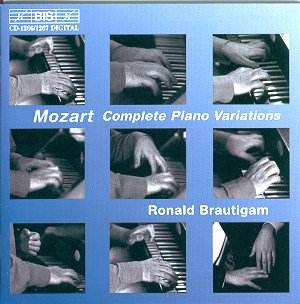 Composer: Jehan Titelouze (1563-1633)
Composer: Jehan Titelouze (1563-1633)
Works: Hymns (Ave Maris Stella, Pange Lingua, Veni Creator, Conditor Alme siderum, A solis ortis, Exsultet Coelum) and a Magnificat on the sixth tone
Performers: Thomas Dallam (historic organ), Jean-Charles Ablitzer (organ), Gerard Lesne, Josep Benet, Josep Cabre, Malcolm Bothwell (vocals)
Recording: Church of Saint-Miliau, Guimiliau, Finisterre, November 1990
Label: Harmonic Records HCD 9037 [58:58]
Jehan Titelouze, a towering figure in the realm of French Renaissance music, emerges in this recording as a master of organ composition and liturgical hymnody. His works, primarily composed for the rich sonorities of the organ, exemplify a transitional moment in music history, bridging the late medieval and early baroque eras. The hymns featured on this disc provide an illuminating glimpse into the sacred repertoire of 17th-century France, revealing not only the composer’s ingenuity but also the lush textures and intricate counterpoint that characterizes his style.
The opening piece, “Ave Maris Stella,” encapsulates Titelouze’s hallmark approach: a juxtaposition of plainsong melodies with vibrant organ verses. The organ, performed by Jean-Charles Ablitzer, takes a commanding role, weaving through the plainsong lines with both reverence and assertiveness. The first verse, set in a clear four-part texture, is strikingly effective; the hymn’s melody, sung by the tenor while interspersed with organ verses, creates a dialogue that feels both sacred and expansive. The performance choices made by Ablitzer, particularly his use of the organ’s rich reed stops, enhance the textural interplay between voice and instrument, allowing the music to resonate with architectural grandeur.
Throughout the disc, the performers exhibit a profound understanding of the historical and stylistic context of the works. The a cappella sections, particularly in “Pange Lingua,” contrast starkly with the organ interludes, establishing a dynamic tension that is both refreshing and invigorating. The decision to employ plainsong without the embellishment of four-part writing in this piece reflects an adherence to sacred tradition, yet the organ’s verses maintain a sense of modernity through their rhythmic vitality and harmonic exploration. Ablitzer’s ability to maintain momentum while navigating complex counterpoint speaks to his technical proficiency and interpretative insight.
The recording’s sound quality warrants particular praise; the engineering captures the organ’s timbral variety and the resonant acoustics of the Church of Saint-Miliau beautifully. The balance between the organ and vocal ensemble is judiciously handled, allowing each voice to emerge distinctly without sacrificing the overall cohesion of the performance. The vibrant character of the “trompette” stop, for instance, is particularly well rendered, bringing a celebratory quality to the music that aligns with the liturgical context from which these hymns spring.
This release stands out not only for its artistic merit but also as a valuable document of Titelouze’s contributions to liturgical music. The combination of well-curated repertoire and expert musicianship offers a compelling listening experience that resonates with both historical authenticity and modern sensibility. The disc serves as a fitting homage to Titelouze, whose life and work encapsulated a vibrant chapter in the evolution of sacred music in France.
The synthesis of historical insight, technical prowess, and interpretive depth in this recording underscores its significance in the contemporary landscape of classical music. It offers listeners a rich tapestry of sound that is both enlightening and deeply moving, establishing a lasting appreciation for Titelouze’s legacy within the canon of early music.



